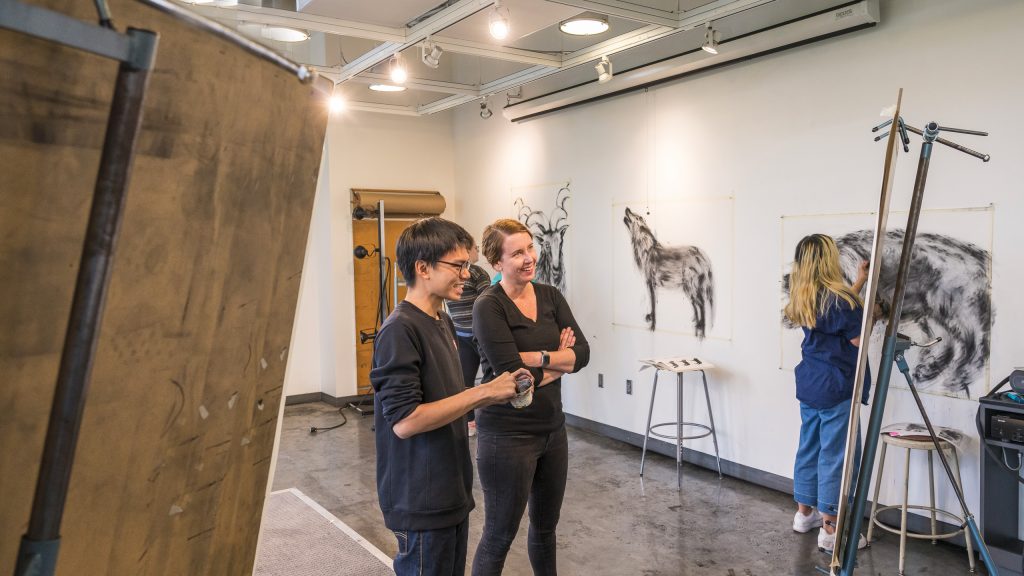
“A really good comic will take you on a journey of different timeframes, in addition to just going through that narrative,” says Vossler.
The assignment: Come up with an original story that follows a classic narrative arc over four to six pages. Your character expresses a desire or wish, encounters some obstacles along the way, and then reaches a point of resolution. The time progression is linear. Your character doesn’t have to be human. Most important, you are responsible for writing the words of the story and—using black ink or no more than three colors—drawing the images, with at least one panel per page. In other words: create a comic book.

“There’s a whole vocabulary of comics that is based around visual design principles,” says art professor Megan Vossler. “Things like the amount of negative space that you have around something that you’re showing, for example, or just the placement and number of panels that you put on a page or how you lay them out.” Creating comics was one part of Vossler’s fall semester Drawing II class, “Narrative and Sequential Images,” which focused on visual storytelling.
“A really good comic will take you on a journey of different timeframes, in addition to just going through that narrative,” says Vossler. To create the comics, students did a lot of what’s called “thumb nailing”—using Post It notes to lay out different key moments and spacing them out on different pages to feel out the timing. For developing narratives, Vossler’s colleague Matt Burgess, a professor in the English Department, came to class and talked about narrative, arc structure, and conflict-based plots, and walked students through an exercise.
For comics, the trick is finding the right balance between words and images. “Everything about drawing is problem solving—from the materials, to the paper, to the right type of ink,” says Vossler. “But you also have to think: how am I going to fit this entire scene into one panel? What can I leave out? What’s really unnecessary to the story? What’s really essential that I have to keep in no matter what?”
All of the students took really different approaches, she says. While some pieces are autobiographical, others are cerebral, and even fantastical. “I was really impressed with the stories the students came up with,” she continues. “They really went for it and created these narratives that have a lot of depth and complexity.”
View some of the comic book projects from Drawing II.
Bricks
By Rebecca Edwards
Mimic
By Rebecca Grossi
Interdimensionality
By Kashvi Ajitsaria
Under The Waves
By Mia Friedman
January 30 2020
Back to top




